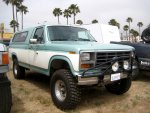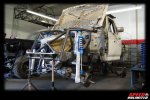Erik N
Adventurer
As for IFS vs solid axle debate, I'd go IFS consisting of a well built and thought out design
A picture is worth 1000 words
As for IFS vs solid axle debate, I'd go IFS consisting of a well built and thought out design
Wife's YJ (which is leaf-sprung) rides like a buckboard and is terrible on washboard.
Everyone has their preferences though. and I agree TTB is a sweet set up!
Do you mean that goofy split dana50 thing on OBS F150's and fullsize Broncos??? With all the alignment problems and +camber change like a Econoline van? I'm going to pretend I didn't hear/see that.
Keep on pretending then... lol :sombrero: It IS infact a great setup, though only if you build it properly (something much of the lift industry hasn't made real easy to do unfortunately, and is why you often see the steering & alignment issues you do with them).


Auto Fab, Giant Motorsports, Camburg build decent TTB's...
No doubt, those are great companies for TTB stuff, but they are the minority (and tend to be on the pricier side too). Many of the bigger-name products have narrow & flimsy axle brackets (which often stress the frame to the point of cracking), and the way they throw the angle of the steering linkage all catawampus because their drop pitman arms are too short (causing massive toe-in/toe-out bumpsteer) have led people to creating humorous stories like the one locrwln posted (thanks for the laugh too BTW lol).
Alignment technicians unable to figure out how to change a caster alignment bushing when needed (or are too lazy to) and them telling vehicle owners "that's just how they are, blah blah" have not helped it's image either.
